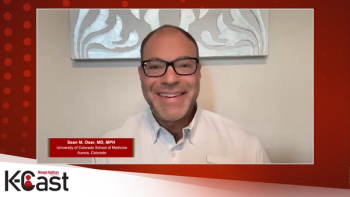
The Cost of Diabetes Care-And How to Help Patients Lower It
It’s no secret that diabetes costs the healthcare system billions every year. Here are some tips to help keep those costs in check.
For some, diabetes management can rock the bottom line.
The American Diabetes Association (Association)
The study, Economic Costs of Diabetes in the U.S. in 2017, was commissioned by the Association and addresses the increased financial burden, health resources used, and lost productivity associated with diabetes in 2017. The study includes a detailed breakdown of costs along gender, racial and ethnic lines, as well as a breakdown of costs on a state-by-state basis.
The total estimated cost of diagnosed diabetes in 2017 includes $237 billion in direct medical costs and $90 billion in reduced productivity.
Prescription medications are among the largest components of medical expenditures care, representing 30% of the total medical cost.
Those with diagnosed diabetes incur average medical expenditures of $16,752 per year, of which about $9,601 is attributed to diabetes. People with diagnosed diabetes, on average, have medical expenditures approximately 2.3 times higher than what expenditures would be in the absence of diabetes.
However, diabetes patients and their families can do a number of things to help reduce the costs related to the condition, according to experts.
Related article:
“Online retailers may offer brand name medications or supplies at lower prices, which might be viable alternatives for those with limited or no insurance,” says Ann Albright, PhD, director of the Division of Diabetes Translation at the CDC. “It’s important to know that the organization is reputable when buying online.” A tip document published by the FDA can help consumers make that determination.
Consumers also should consider pharmacy assistance programs, often offered by pharmaceutical companies, nonprofits, or state governments to help those otherwise unable to afford medications,” says Albright. Patients are also encouraged to work closely with their healthcare providers to select the medications that meet their treatment needs and targets, but perhaps less expensively, she notes.
Healthier lifestyle, lower pharma costs
Of course, individuals can also save money by improving their overall health, primarily through various lifestyle measures, like a low-carb diet, stress management movement, and if required, nutritional supplements, says diabetes expert Hanna Boëthius.
“That way, the diabetes diagnosis of that person also improves, and can potentially lower the amount of medication, as well as medical attention needed,” she adds. Some type 2 diabetes patients can even stop taking medication altogether, although they should do so in conjunction with their physician. “People living with type 1 diabetes can certainly never stop insulin altogether, but the amount used can be less through a healthier lifestyle.”
Shopping and meal preparation are another area where people with diabetes can reduce expenses, adds Albright. “When shopping, look for deals in the perimeter of the store, where healthy, unprocessed foods are located.” Shop for healthy items on sale and use coupons to buy fruits, vegetables, dried beans, fish, and other lean meats, she notes. “You can also plan meals ahead of time so you know what you’re shopping for and prepare a list.”
Other methods include buying healthy foods in bulk and preparing or freezing them so they can easily be pulled as needed for quick meals, says Albright. “For instance, fruits and vegetables can be washed, cut and frozen to use throughout the week and beyond. Also try to buy fruits and vegetables in season, which are often less expensive, and use them in a variety of meals.”
What’s more, type 1 and type 2 diabetics can seek out items on sale and use coupons. “But be sure they’re (coupons) for healthy foods, fish and meat, and low-cost things like beans and lentils. Not refried, but in the can.” She stressed using, if possible, dried beans in the bags, since canned ones often contain a great deal of hidden sodium. Buying dried beans in the bags are a healthier and more economical option, she continues. Frozen vegetables are a good option as well; though it’s important to avoid those packaged with sauce.
Chuck Green has covered healthcare for more than 10 years.
Newsletter
Get the latest industry news, event updates, and more from Managed healthcare Executive.


















































